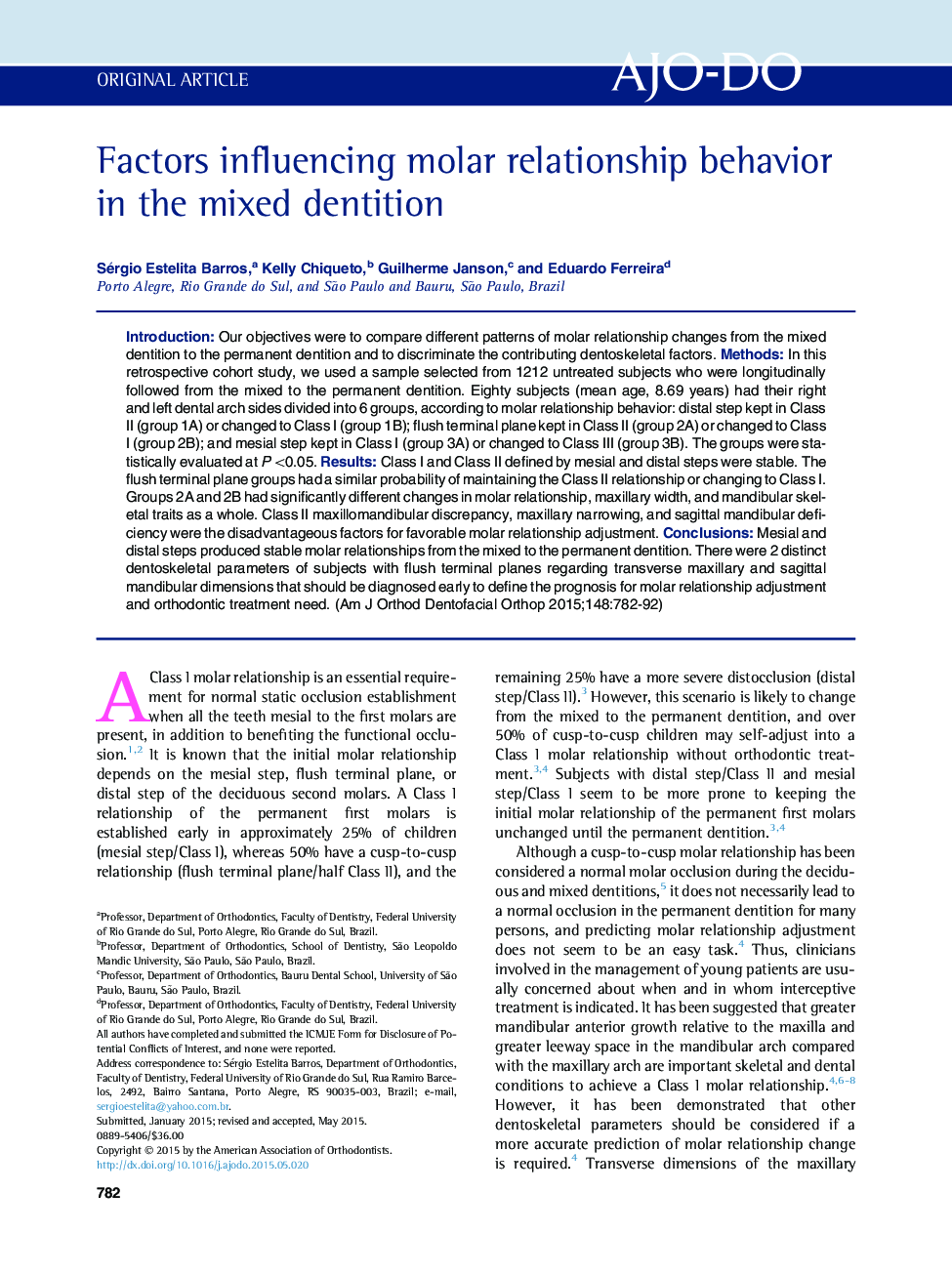| کد مقاله | کد نشریه | سال انتشار | مقاله انگلیسی | نسخه تمام متن |
|---|---|---|---|---|
| 3115797 | 1582682 | 2015 | 11 صفحه PDF | دانلود رایگان |
• Molar relationship changes from the mixed to the permanent dentition were evaluated.
• Mesial and distal steps produced a stable relationship of the permanent first molars.
• Flush terminal plane produced the most unstable permanent first molar relationship.
• Leeway spaces were not a significant predictor of molar relationship change.
IntroductionOur objectives were to compare different patterns of molar relationship changes from the mixed dentition to the permanent dentition and to discriminate the contributing dentoskeletal factors.MethodsIn this retrospective cohort study, we used a sample selected from 1212 untreated subjects who were longitudinally followed from the mixed to the permanent dentition. Eighty subjects (mean age, 8.69 years) had their right and left dental arch sides divided into 6 groups, according to molar relationship behavior: distal step kept in Class II (group 1A) or changed to Class I (group 1B); flush terminal plane kept in Class II (group 2A) or changed to Class I (group 2B); and mesial step kept in Class I (group 3A) or changed to Class III (group 3B). The groups were statistically evaluated at P <0.05.ResultsClass I and Class II defined by mesial and distal steps were stable. The flush terminal plane groups had a similar probability of maintaining the Class II relationship or changing to Class I. Groups 2A and 2B had significantly different changes in molar relationship, maxillary width, and mandibular skeletal traits as a whole. Class II maxillomandibular discrepancy, maxillary narrowing, and sagittal mandibular deficiency were the disadvantageous factors for favorable molar relationship adjustment.ConclusionsMesial and distal steps produced stable molar relationships from the mixed to the permanent dentition. There were 2 distinct dentoskeletal parameters of subjects with flush terminal planes regarding transverse maxillary and sagittal mandibular dimensions that should be diagnosed early to define the prognosis for molar relationship adjustment and orthodontic treatment need.
Figure optionsDownload high-quality image (191 K)Download as PowerPoint slide
Journal: American Journal of Orthodontics and Dentofacial Orthopedics - Volume 148, Issue 5, November 2015, Pages 782–792
